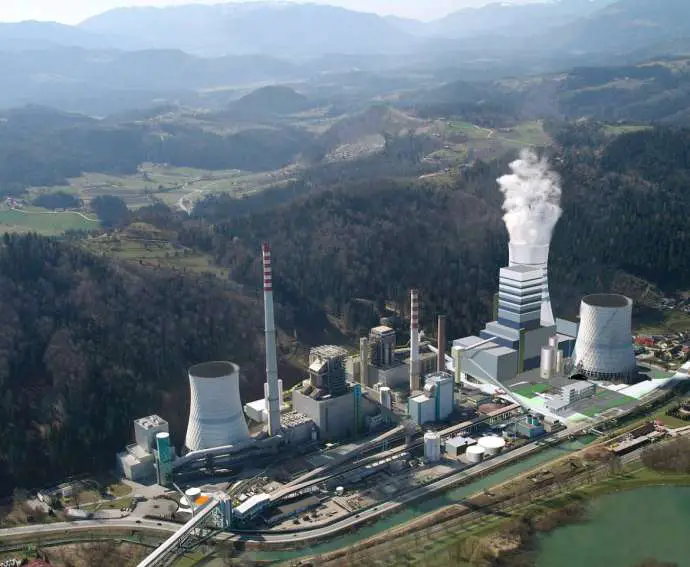STA, 16 April 219 - HSE, the state-owned power utility which owns the Šoštanj coal-fired power station (TEŠ), is looking for a new energy source for TEŠ, according to HSE chairman Stojan Nikolić. He believes burning biomass or waste would be economically viable.
"We know that we have to overhaul the plans for the operations of the Premogovnik Velenje mine and TEŠ. It's been clear for a while that TEŠ will not be able to operate until 2054, as originally planned, both for economic and technical reasons," Nikolić said in an interview with the STA.
But he could not say when the coal-fired power station will be wound down, because it is not clear yet how long the extraction of coal from the Velenje mine, the only source of coal for TEŠ, will be possible.
"My estimate is that until 2040. But we need to set the framework for a fair transition to other activities for the entire coal mining region.
"If we manage to agree on this in the next two or three years, which I'm hoping for, then I think we can still be competitive in the next 15 or 20 years with the production of electricity from coal," he said.
The main challenge faced by HSE as the biggest coal-fired producer of electricity in the country is decarbonisation.
The construction of TEŠ 6, the cutting-edge generator with minimal emissions, was part of efforts to reduce CO2 emissions, Nikolić said.
But TEŠ is still unable to cover the costs of the investment, which are being partly covered by HSE. Admitting that TEŠ was struggling, Nikolić said that the management of HSE and TEŠ were looking for possible solutions. Given that the viable coal reserves at the Velenje mine are running out, importing coal is one of the options.
However, given the current market prices of coal and CO2 coupons, importing coal would not be economically viable and the situation will only get worse in the future.
This would be an option only if a supplier was found that would offer coal at the same price as the Velenje mine, which is EUR 2.75 per gigajoule, or 50 cents more at the most, Nikolić said. "That is, if we get all the necessary permits."
The Environment Agency already said importing coal would require no additional permits, but the environment permit would still need to be changed if any other energy source is to be used at TEŠ.
"Burning biomass would probably be economically viable and definitely also burning processed waste, as now we are paying a lot of money to export waste to Austria and Italy."
Burning imported coal is seen as the last resort, but if this would make it difficult for TEŠ to obtain an environmental permit for biomass and waste burning, then the idea to import coal would be abandoned.
Slovenia will have to solve the problem of waste treatment soon, and TEŠ as well as the cement plant in Anhovo are appropriate facilities to burn waste, Nikolić said.
The other area HSE is focussing on is renewable energy sources but the options here are limited. The Drava river can take no more power plants, while recently a political decision was made not to build any on the Mura, he said.
HSE is currently cooperating with GEN Energija in building a chain of hydro power plants on the lower Sava river and has a concession for the plants on the middle Sava.
But Nikolić said they often faced resistance from environmental groups. Any new facility can be controversial, which is why measures must be taken to minimize the environmental impact and take measures to offset its effects, he believes.
The alternative is to import electricity from the countries which still burn coal, such as Poland, Bosnia-Herzegovina and Kosovo. But this means more green house gas emissions. "What will we do with the intact Mura if temperatures rise for a couple of degrees and there will be no life in it?"
By 2040, two biggest power plants, TEŠ and the Krško Nuclear Power Plant (NEK), generating more than half of electricity in the country, will probably be wound down. "They will not be able to be replaced with just hydro power plants," Nikolić stressed.






